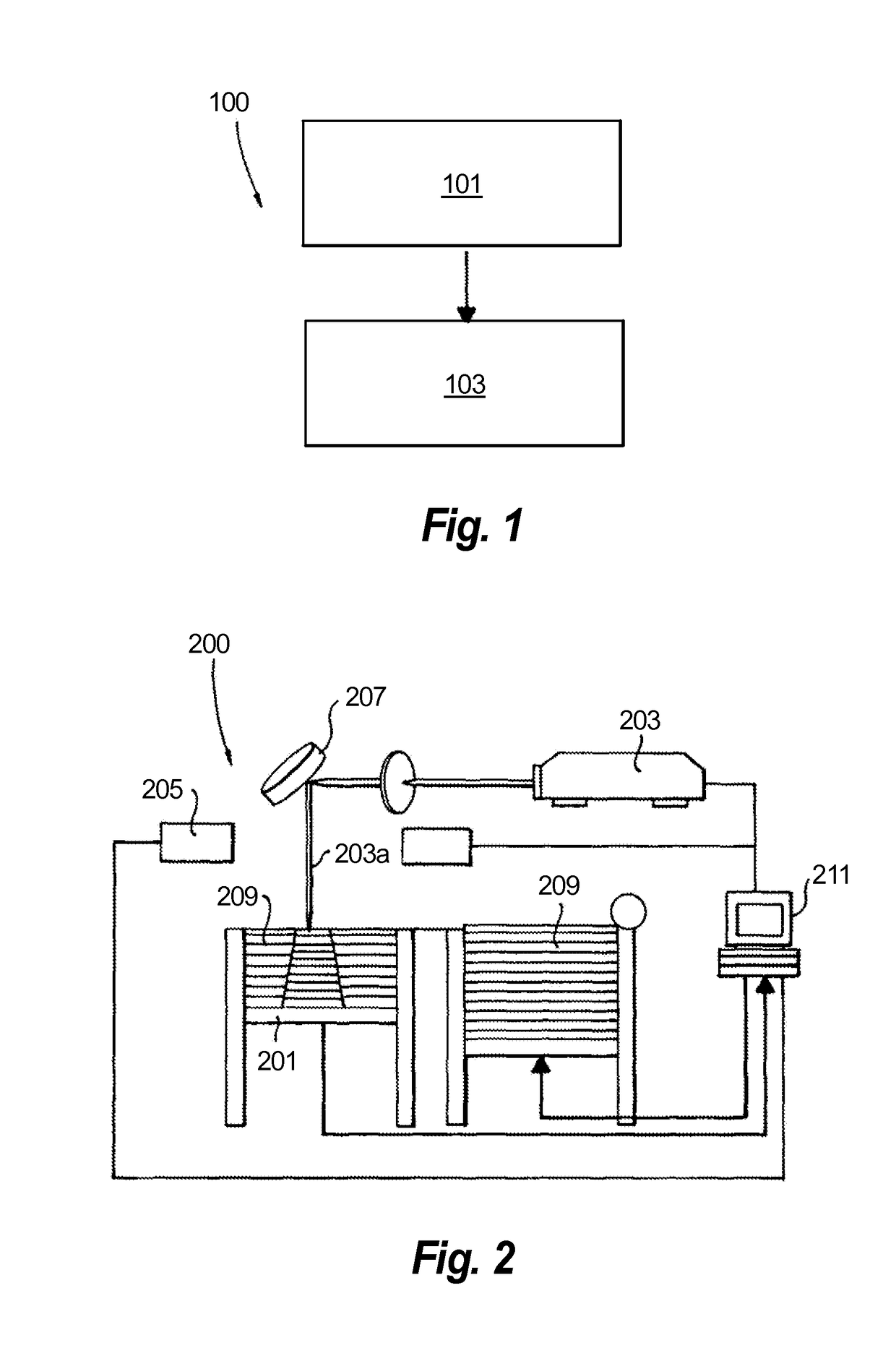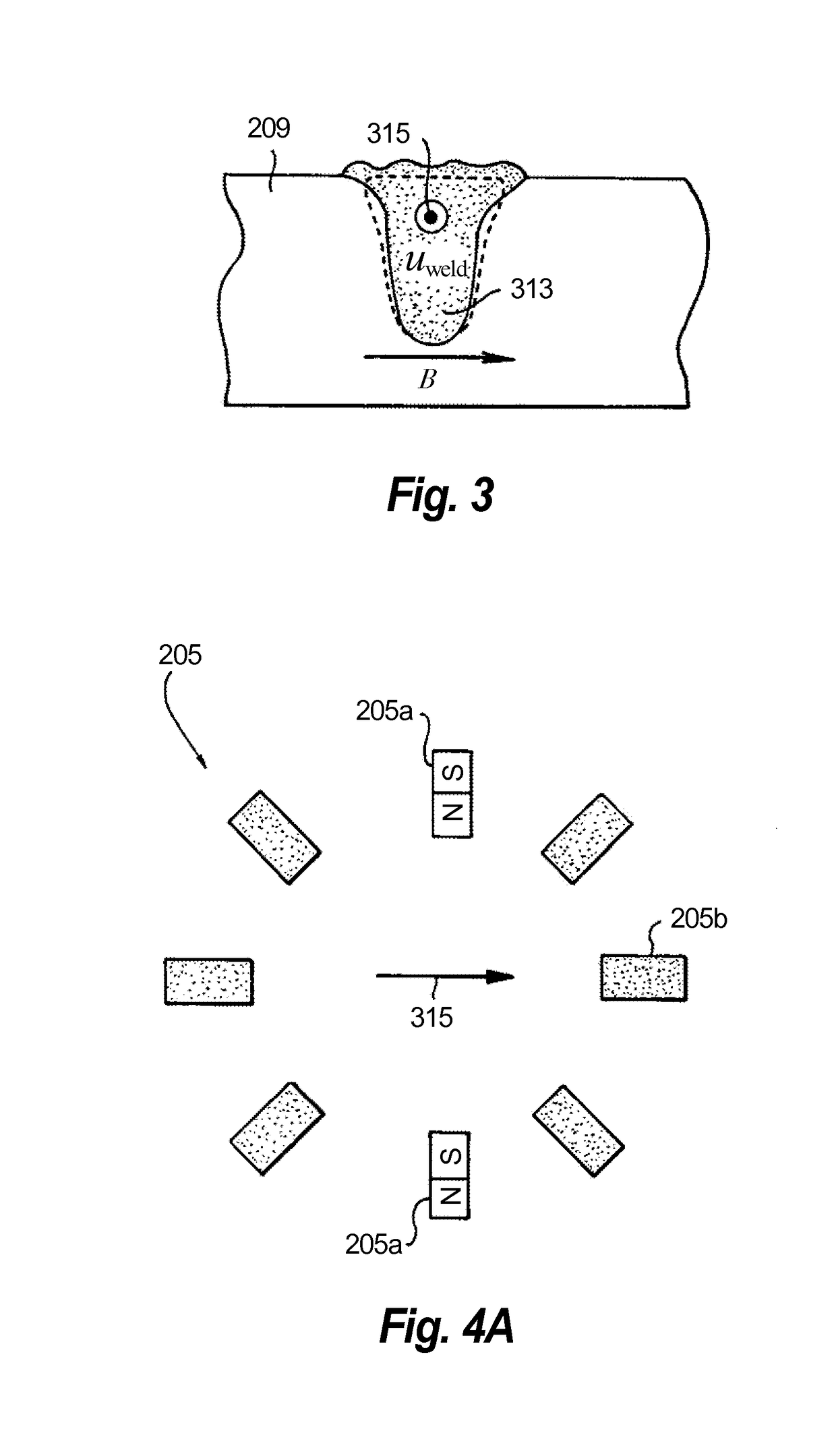Additive manufacturing systems and methods
a manufacturing system and additive technology, applied in the field of additive manufacturing, can solve the problems of difficult to achieve optimal melting/solidification rate, inability to control the desired grain size and morphology with traditional techniques, and the inability to implement additively manufactured components, etc., to achieve the effect of reducing the cross-sectional area of the weld pool and reducing the wall thickness of the additively manufactured articl
- Summary
- Abstract
- Description
- Claims
- Application Information
AI Technical Summary
Benefits of technology
Problems solved by technology
Method used
Image
Examples
Embodiment Construction
[0028]Reference will now be made to the drawings wherein like reference numerals identify similar structural features or aspects of the subject disclosure. For purposes of explanation and illustration, and not limitation, an illustrative view of an embodiment of a method in accordance with the disclosure is shown in FIG. 1 and is designated generally by reference character 100. Other embodiments and / or aspects of this disclosure are shown in FIGS. 2-5. The systems and methods described herein can be used to improve manufacturing characteristics and the quality of additively manufactured articles.
[0029]Referring to FIGS. 1-3, a method 100 for additively manufacturing an article includes applying 101 energy to a powder 209 to produce a weld pool 313 of molten powder and applying 103 an electromagnetic field to the weld pool 313 to control one or more characteristics of the weld pool 313. Applying the electromagnetic field 103 can include applying an electric field and / or a magnetic fi...
PUM
| Property | Measurement | Unit |
|---|---|---|
| energy | aaaaa | aaaaa |
| electromagnetic field | aaaaa | aaaaa |
| electric field | aaaaa | aaaaa |
Abstract
Description
Claims
Application Information
 Login to View More
Login to View More - R&D
- Intellectual Property
- Life Sciences
- Materials
- Tech Scout
- Unparalleled Data Quality
- Higher Quality Content
- 60% Fewer Hallucinations
Browse by: Latest US Patents, China's latest patents, Technical Efficacy Thesaurus, Application Domain, Technology Topic, Popular Technical Reports.
© 2025 PatSnap. All rights reserved.Legal|Privacy policy|Modern Slavery Act Transparency Statement|Sitemap|About US| Contact US: help@patsnap.com



